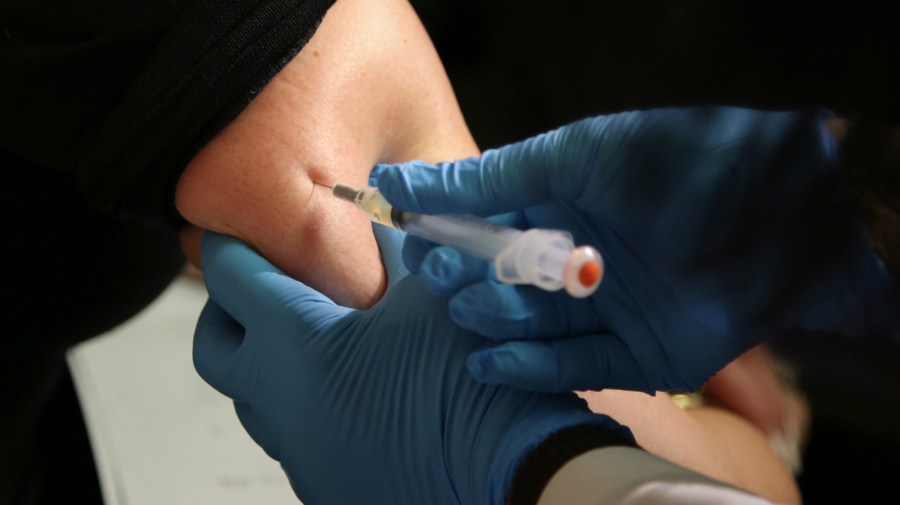(NEXSTAR) – Multiple measles outbreaks have been reported already this year, with one in Texas ballooning from six cases to 48 in just over a week.
“Due to the highly contagious nature of this disease, additional cases are likely to occur in Gaines County and the surrounding communities,” the Texas Department of State Health Services (DSHS) said on Friday.
The majority of cases in Texas involve children under the age of 17, the Texas DSHS said. Thirteen have been hospitalized.
A teen from Lea County, New Mexico — just over the border from Gaines County, Texas — was also infected, though the patient has had no known contact with any of the Texas patients, the New Mexico Department of Health said Tuesday.
In an update earlier this month, the Centers for Disease Control and Prevention (CDC) had identified just 14 total cases across Texas and four other states: Alaska, Georgia, New York and Rhode Island. The CDC did not provide the ages of the patients, nor the case counts for each individual state.
In its Friday bulletin, the Texas DHSH said all confirmed cases were among patients who were unvaccinated or whose vaccination status was “unknown.” The 14 cases confirmed by the CDC were all among unvaccinated patients, the agency said.
Texas Health Department shares says additional measles cases ‘likely’
The reason for these recent outbreaks, experts believe, can be traced to declining vaccination rates.
“Measles used to kill, you know, so many children, and we’re starting to see outbreaks again because parents are not getting their kids vaccinated,” Dale Bratzler, the dean of the University of Oklahoma’s Hudson College of Public Health, told Nexstar’s KFOR.
Amesh Adalja of Johns Hopkins University, speaking with the Agence France-Presse, added that the Gaines County area in Texas has among the “lowest rates of vaccination in the state” — which he likened to “kindling for such outbreaks.”
Even a vaccination rate of below approximately 95 percent increases the risk of outbreaks, the World Health Organization warns, because herd immunity is only achieved at that rate.
“When the population rate of vaccination starts to fall below 95 percent, you’re going to have outbreaks,” Bratzler said.
The CDC no longer keeps county-level vaccination data for measles, mumps and rubella (MMR) vaccines, but the rate of vaccination in the U.S., in general, has fallen among kindergarten-aged children from 95.2 percent during the 2019-2020 school year to 92.7 percent in 2023-2024. Most states, as of the 2023-2024 school year, had rates below 95 percent, with Idaho having the lowest at 79.6 percent, according to CDC estimates.
A nurse demonstrates how a measles vaccine is administered at the Orange County Health Department on May 6, 2019, in Orlando, Florida. (Paul Hennessy/NurPhoto via Getty Images)
Bratzler, speaking with KFOR, said he believed that low vaccination rates were linked to public wariness or resistance brought on by misinformation, some of which is fueled by politicians.
“I think there’s clearly been political influence on the way that there’s vision about the effectiveness and safety of vaccines,” Bratzler said.
Robert F. Kennedy Jr., who was sworn in as the Secretary of Health and Human Services on Thursday, has repeatedly been called out for promoting anti-vaccine views. During his Senate hearings earlier this month, he also suggested that a deadly 2019 measles outbreak in Samoa wasn’t actually caused by measles, a claim that Samoa’s director-general of health called “a total fabrication.”
Kennedy had visited Samoa in the months before the outbreak, during a trip organized by a Samoan anti-vaccine influencer, The Associated Press reported. One anti-vaccine advocate who posed for a photo with Kennedy in Samoa later claimed that he had received advice from Kennedy’s associates about eschewing the MMR vaccine in favor of alternative treatments.
Kennedy later claimed his words “had nothing to do with vaccine update in Samoa or with the 2019 epidemic,” the AP reported.
Hawaii aid workers administer MMR vaccinations on December 6, 2019, in Apia, Samoa. (Chikara Yoshida/Getty Images)
In the years prior to the introduction of the measles vaccine in 1963, an estimated 3 to 4 million Americans were infected per year, of which about 400 to 500 died. The disease was considered eliminated from the U.S. by 2000, meaning that any new outbreaks were not traced to internal cases, but rather patients bringing cases into the country, including U.S. citizens returning to the country with measles.
Total cases of measles in the U.S. have remained fairly low since then — generally under a few hundred each year. Cases spiked a bit in 2014 and 2019, and were trending upward again in 2024, when 285 cases were confirmed.
Louisiana to end mass vaccine promotion, state’s top health official says
Measles, meanwhile, remains highly contagious. Cases can spread by touching infected surfaces that contain secretions from an infected person, or via the air, after an infected person coughs or sneezes.
“You can get measles just by being in a room where a person with measles has been. This can happen even up to 2 hours after that person has left,” the CDC writes.
The best way to avoid transmission, of course, is to get vaccinated, according to the CDC, the World Health Organization and most infectious disease experts.
“The best way to prevent getting sick is to be immunized with two doses of a vaccine against measles, which is primarily administered as the combination measles-mumps-rubella vaccine,” reads the Friday bulletin from Texas DHSH. “Two doses of the MMR vaccine are highly effective at preventing measles.”
